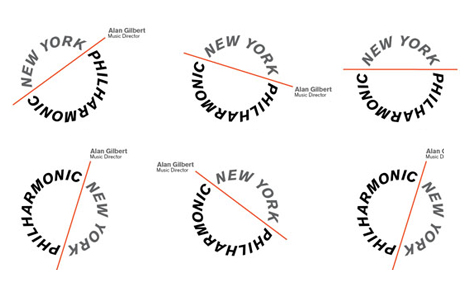I googled Paula Scher, and it turns out she is everywhere. Now, I know just because you have a large portfolio does not necessarily mean that you can be easily identifiable anywhere, but Paula Scher has a certain hidden-in-plain-sight kind of presence in New York, at least to those who are or were not aware of her involvement. One of my favorites out of her logos is her design for the New York Philharmonic:
 |
| The New York Philharmonic's new graphic identity designed by Paula Scher. |
It was also pretty fascinating to find out that Paula Scher was involved in these everyday package designs too:


















